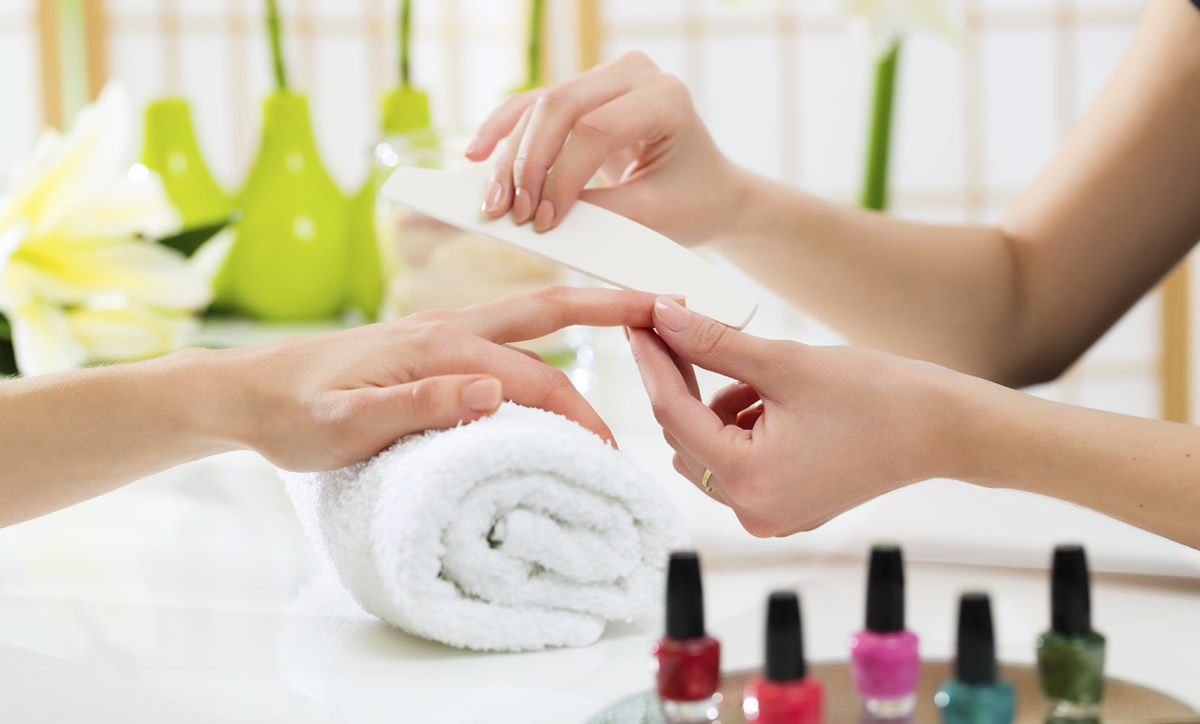If you love getting a manicure or pedicure, a recent announcement by the Environmental Working Group will make you rethink the brands you might be using. Polishes by Sally Hansen, Essie, OPI, Revlon, Wet N Wild, Spa Ritual, Orly, theBalm, Nuance, Maybelline and Beauty without Cruelty contain a chemical called triphenyl phosphate (TPHP), known for its endocrine-disrupting effect. TPHP is also used to make plastics and the fire retardants used in furniture. Yes, fire retardants that have been banned in the State of California.
Researchers at Duke University tested the urine of 26 women who had recently painted their nails and found evidence of TPHP in the urine of EVERY participant and those levels rose sharply after they applied the nail polish. Of the 3000 nail products in the EWG’s Skin Deep Database, half disclose the use of TPHP. It’s not only found in nail polish, but also nail activators, strengtheners, thickeners and ridge fillers.
Here’s my concern. The compromised, damaged bladder (i.e. glomerulations, Hunner’s lesions) found in many interstitial cystitis patients allows chemicals like TPHP to penetrate more deeply into the bladder wall where they can do great damage. I find myself shocked that nail polish, which I thought stayed on the surface of the nail, could actually be absorbed through the nails and cuticles where it can cause a wide variety of systemic effects.
TPHP’s Ugly Side
So what does TPHP do? Rats exposed to TPHP before and after birth became obese and female went through early puberty. (Patisaul 2013) Several studies with zebrafish exposed to TPHP found altered sex hormone balances and that it changed the gene expression of receptors that increased or decreased hormone activity. (Isales 2015, Liu 2012, Liu 2013a, Liu 2013b) Oh, and it also caused heart defects. (Du 2015, Liu 2013b, McGee 2013).
Researchers in Japan found that TPHP stimulated female hormones and reduced male sex hormones. (Kimono 2013). TPHP was also found to diverted immature cells away from bone formation and toward fat development. Yes, another potential cause of obesity. (Belcher 2014, Pillai 2014)
But let’s talk about another alarming effect. A University of Michigan study found that adult men exposed to TPHP had lower sperm counts and produced more prolactin, a hormone that stimulates breast development and milk production. (Meeker 2010) Semen quality was also effected. (Meeker 2013)
Unfortunately, the chemical industry and American manufacturers use massive amounts of TPHP, importing more than 10 million pounds in 2012. As the EWG has compaigned for the past decade, a new chemical reform policy is desperately needed to protect Americans from these, and other, harmful chemicals.
Recommendations
The EWG offers several recommendations.
#1 – When buying nail polish, read the label. If it says triphenyl phosphate (TPHP) or dibutyl phthalate (DBP), don’t buy it.
#2 Tell your manicurist about this new research and demand that they carry safer brands. The EWG Skin Deep Database can help you find safer products.
#3 – Never use adult nail polish containing TPHP or DBP on children. Always check labels, even on nail polish marketed to children.
#4 – When buying new furniture, ask the store (and the manufacturer) if the furniture contains fire retardants. Choose products free of fire products. In California, furniture may no longer be sold which contains fire retardants. In fact, my veterinarian believes that the rapid increase of cancers found in dogs and cats are due to fire retardants found in the home. You should ALWAYS ask just to be sure that you are buying a safe product.
#5 – Learn more about the Environmental Working Group, one of the best and most productive non-profit organizations in the world. They publish the Clean Fifteen and Dirty Dozen foods lists which rank foods based upon pesticide residues found. They fight for GMO and chemical safety reform. They offer several wonderful and free guides on their website (GMO Foods, Sunscreen Guides, Seafood Safety, Water Filter Buying Guide, Healthy Cleaning, Pesticides in Product, Food Additives) that will help you reduce chemical exposure in your home and for your family. Learn more at: http://www.ewg.org

